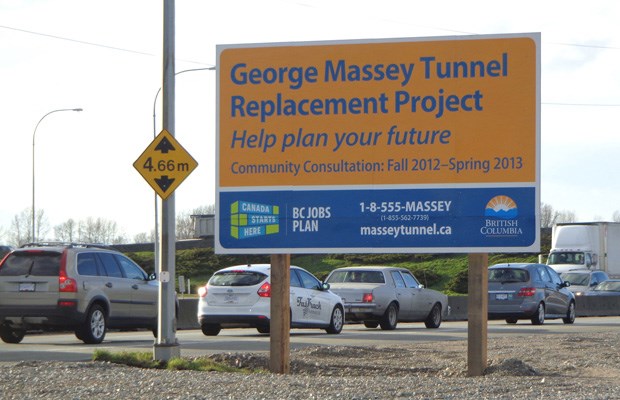 Spent an hour on a conference call about the Massey Tunnel replacement project Wednesday, waiting to hear something like: “Naturally, because of the horrendous ferry costs imposed on Vancouver Islanders just getting to the new bridge, the toll will be waived for Islanders as a gesture of our respect for their suffering.”
Spent an hour on a conference call about the Massey Tunnel replacement project Wednesday, waiting to hear something like: “Naturally, because of the horrendous ferry costs imposed on Vancouver Islanders just getting to the new bridge, the toll will be waived for Islanders as a gesture of our respect for their suffering.”
Didn’t happen.
Motorists on southern ferry routes bound for the north side of the Fraser River will be dinged an unspecified toll — in the $3.15 to $5.45 range — like everyone else.
Metro Vancouver fare-dodgers are already scheming ways to avoid this latest ding, seven years before the bridge actually opens. The government has already helpfully paved the way for Islanders to do the same — take the South Fraser Perimeter Road to the Alex Fraser Bridge, and then take your chances fighting traffic there. The ministry is budgeting for a 13 per cent diversion rate.
But I’m betting most Island drivers — whose costs are in the $100 range by the time they reach the point of crossing the river — will sail over the new bridge with little more than a wince at the additional tab.
In the best possible circumstances, the Massey Tunnel is an uncomfortable trip down a nasty old rabbit hole back to the 1950s. In the worst circumstances — meaning the morning and evening rush hours — it’s a horror show.
Compared to waiting a half-hour or more in gridlock just for a chance to go under the river, a $5 fee looks good.
The indications from all the traffic analyses released Tuesday is that the new bridge and the Alex Fraser Bridge will work as one system. Islanders who are too cheap, or have moral objections to the toll, can drive several kilometres out of their way to the (free) Alex Fraser.
But that’s only a better bet during off-peak hours. Trying that gambit during rush hour will just buy you more gridlock and leave you further up the river, as it were.
Transportation Minister Todd Stone’s update on the huge project included the first official price tag — $3.5 billion, all in, triple-checked and confirmed by an independent expert.
That basic element has been hazy ever since Premier Christy Clark first sprang the idea on people at a speech to municipal leaders in the fall of 2012.
Metro Vancouver politicians have been suspicious of the project because they didn’t get a chance to argue about it. One of their criticisms was that the business plan for the bridge was scanty, if there was one at all. Anyone who has tried to use the tunnel on a Friday afternoon before a long weekend would consider that experience a business plan all by itself.
But Stone, apparently stung by criticism there was no plan for the bridge, released 2,700 pages of bridge studies on Tuesday.
One of the documents is a business case. It assigns values to all the benefits and concludes the benefit-to-cost ratio comes in at 2.1:1.
It’s based on a 10-lane bridge (two dedicated for buses and high-occupancy vehicles, and built to be ready for rapid transit later) built on the same alignment as the tunnel, to be finished by 2022. An assortment of ancillary improvements are included. The tunnel would be removed on completion.
Planners forecast a 35 per cent drop in collisions, a big cut in emissions from idling and minimal intrusion on farmland, to the point where Stone said there might be a net addition.
Just So You Know: Notes from the business plan:
• It was the flamboyant “Flying” Phil Gaglardi, Stone’s predecessor both as minister and Kamloops MLA, who built the tunnel in the late 1950s. The Queen opened it in 1959, when it had a 50-cent toll that was removed in 1964, after the bill was paid.
• Tunnel delays range from five to 50 minutes northbound on weekdays, and are 20 minutes southbound.
• There’s an estimated one-in-275-years likelihood of an earthquake causing tunnel failure, compared to a 1-in-2,475-years likelihood of failure of a new bridge.
• Collisions average 326 a year and there are far more frequent northbound than southbound. One-third of collisions involve injuries.



